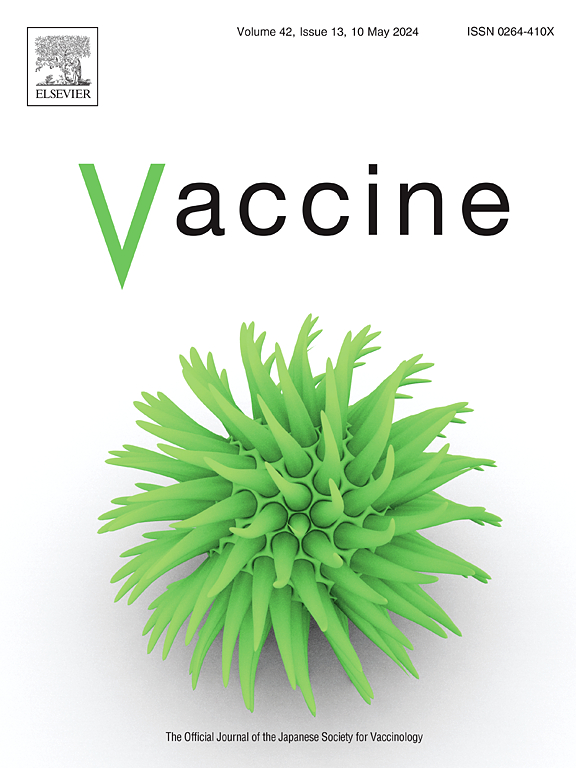Cellular and humoral immune responses to SARS-CoV2, comparing previously infected individuals who received one vaccine dose to uninfected individuals after three vaccine doses: A case-control study
IF 4.5
3区 医学
Q2 IMMUNOLOGY
引用次数: 0
Abstract
Over the last 5 years, the world has been facing the Corona Virus Disease 2019 (COVID-19) pandemic caused by the SARS-CoV2 virus. While vaccination is a leading strategy to control virus spread, it demonstrated an ability to push the virus to evolve and generate vaccine-escape variants. Nevertheless, the official policy in Israel and around the world is vaccination, even in cases of previous SARS-CoV2 infection. Many studies were published regarding vaccination protocols and antibody responses. However, data concerning the differences in humoral and cellular immune response between convalescent individuals who received a single vaccine dose, and SARS-CoV2 naïve vaccinated individuals, are still sparse.
In this study we evaluated the humoral and cellular immune response of healthy convalescent individuals who received a single vaccine dose, and compared it with uninfected individuals who received three BNT162b2 mRNA vaccine doses. Humoral immune response was evaluated by testing the ability of donor samples to bind or inhibit the binding of different SARS-CoV2 variants Spike glycoprotein receptor binding domain (RBD) to ACE2. Cellular immunity was tested using flow cytometry to evaluate cytokine production in response to different SARS-CoV2 peptide mixes, including the Wuhan wild-type (WT) Spike glycoprotein (S)-peptide mix, Omicron-specific S-peptide mix and the Membrane (M) protein peptide mix.
We show that the ability of convalescent, single-dose vaccinated, donors to bind RBD or inhibit ACE2:RBD interaction was comparable to that of 3-dose vaccinated-only donors, independent of the variant tested. In contrast, when testing cellular response, convalescent individuals showed increased IFNγ staining following WT-S peptide mix stimulation (average of 988.4 ± 687.1 vs 590.2 ± 397.1, p = 0.022 responding IFNγ+ cells per 106 CD4+ cells), and even more enhanced response to M-protein peptide mix (average of 2291 ± 4074.2 vs 239 ± 485.85, p = 0.023 responding IFNγ+ cells per 106 CD4+ cells).
This research may provide information for future development of more effective vaccines and vaccination strategies.
细胞和体液对SARS-CoV2的免疫反应,比较先前感染的个体,接受一次疫苗剂量和未感染的个体,在三次疫苗剂量后:病例对照研究
在过去五年中,世界一直面临着由SARS-CoV2病毒引起的2019冠状病毒病(COVID-19)大流行。虽然疫苗接种是控制病毒传播的主要策略,但它显示出推动病毒进化并产生疫苗逃逸变体的能力。然而,以色列和世界各地的官方政策是接种疫苗,即使在以前感染过SARS-CoV2的病例中也是如此。发表了许多关于疫苗接种方案和抗体反应的研究。然而,关于接受单一剂量疫苗的恢复期个体与接种SARS-CoV2 naïve疫苗的个体之间体液和细胞免疫反应差异的数据仍然很少。在这项研究中,我们评估了接受单剂疫苗的健康恢复期个体的体液和细胞免疫反应,并将其与接受三剂BNT162b2 mRNA疫苗的未感染个体进行了比较。通过检测供体样品结合或抑制不同SARS-CoV2变体刺突糖蛋白受体结合域(Spike glycoprotein receptor binding domain, RBD)与ACE2结合的能力来评估体液免疫反应。采用流式细胞术检测细胞免疫,以评估不同SARS-CoV2肽混合物(包括武汉野生型(WT) Spike糖蛋白(S)肽混合物、omicron特异性S肽混合物和膜(M)蛋白肽混合物)对细胞因子产生的反应。我们发现,恢复期、单剂量接种的供者结合RBD或抑制ACE2:RBD相互作用的能力与仅接种三剂量疫苗的供者相当,与测试的变体无关。相比之下,当测试细胞反应时,恢复期个体在WT-S肽混合刺激后显示IFNγ染色增加(平均988.4±687.1 vs 590.2±397.1,p = 0.022每106个CD4+细胞应答IFNγ+细胞),而对m蛋白肽混合的反应甚至更增强(平均2291±4074.2 vs 239±485.85,p = 0.023每106个CD4+细胞应答IFNγ+细胞)。这项研究可能为未来开发更有效的疫苗和疫苗接种策略提供信息。
本文章由计算机程序翻译,如有差异,请以英文原文为准。
求助全文
约1分钟内获得全文
求助全文
来源期刊

Vaccine
医学-免疫学
CiteScore
8.70
自引率
5.50%
发文量
992
审稿时长
131 days
期刊介绍:
Vaccine is unique in publishing the highest quality science across all disciplines relevant to the field of vaccinology - all original article submissions across basic and clinical research, vaccine manufacturing, history, public policy, behavioral science and ethics, social sciences, safety, and many other related areas are welcomed. The submission categories as given in the Guide for Authors indicate where we receive the most papers. Papers outside these major areas are also welcome and authors are encouraged to contact us with specific questions.
 求助内容:
求助内容: 应助结果提醒方式:
应助结果提醒方式:


